A day later, I went back to finish my goop job; I screwed on the bases of my bow lights, and shoved the wires down the hole before putting the light on and completing the installation.
But when I pushed the wires on the second light through, the stopped early….and came back up with the ends covered in white goo. I obviously was only 50% successful with my wire-string-rope gadgets to clean the goop out of the holes. I wasn’t too surprised because I did pull that one through before I intended to. And then when I tightened the screws holding the teak block all the way down and watched the goop squeeze out all around I suspected that this was happening.
So today I got out a wire probe an forced it though…then forced a string through, then tied another little bit of dead rope to the string, and went below and pulled it through, cleaning out the excess goop. It was quick, and I didn’t leave a path of goo in my bedroom. And only a few minutes later, the second bow light was screwed in.
Before I cleaned out the goo, I went back to my used glove box, and found two pairs I had used lightly while installing the teak blocks. Now that I’m done, I think one will survive for yet another day…but the other two probably have too much goop on them to be usable when it kicks. I’ll find out later.
But when I talk of goop winning a battle, I am not speaking correctly. I am actually directing away from my point. The (up-to-now unstated) follow-on sentence is about me winning the war against the goop, but I just can’t say that. Because I’m not in a war with the goop. The goop is on my side, although it can be a sticky partner. I do look for the humor or entertainment in my struggles with partners like this, but there is no battle here, nor is there a war. And I do occasionally struggle, but I am enjoying the work. If I struggle, I am usually learning more and I like that too.
In truth, I don’t feel like I’m working against any part of Flutterby. Instead, I’m lovingly working on turning her into the boat of my dreams. The one I will sail on. When I’m at sea, I trust that she will take loving care of me when I need protection from the elements. Because somehow, I believe she will be returning to me all that I’m putting into her here on land. Most of what I do is to make sure she is seaworthy and sound. But not all. Some things I do are simply because they make her feel like a more wonderful boat to me. Or perhaps just because I love her.

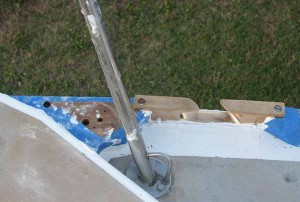
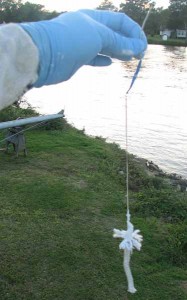
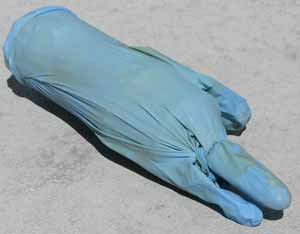
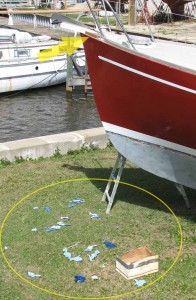
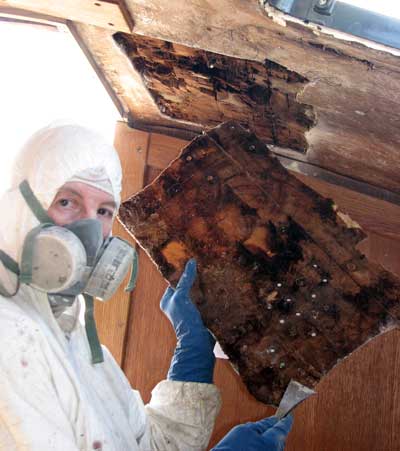 Instead, we have been working on fixing up the deck’s many holes, some of which were letting water (and then rot) into the balsa core. There are one or two that have grown well beyond a little rot around a hole and instead became big areas to patch. Having done this already in the forward portion of the boat, we were relatively old hands, and one lesson I had learned was that cleanup is a big job, so why not make a big HUGE mess all at once, then just do the cleanup once.
Instead, we have been working on fixing up the deck’s many holes, some of which were letting water (and then rot) into the balsa core. There are one or two that have grown well beyond a little rot around a hole and instead became big areas to patch. Having done this already in the forward portion of the boat, we were relatively old hands, and one lesson I had learned was that cleanup is a big job, so why not make a big HUGE mess all at once, then just do the cleanup once.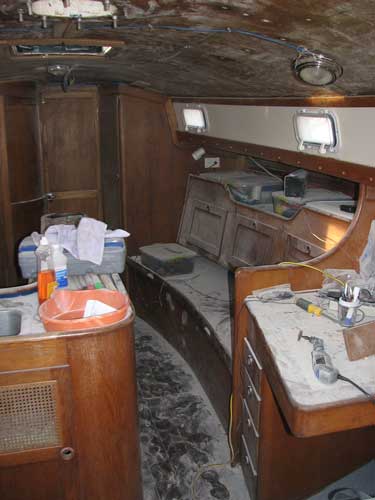 I think this was a good choice, but we sure did make a mess of the boat by now. As I write this, we just have to sweep and vacuum up all the dust, and then we can start putting some things back together. With any luck, it will never get to be quite this big a mess inside again!
I think this was a good choice, but we sure did make a mess of the boat by now. As I write this, we just have to sweep and vacuum up all the dust, and then we can start putting some things back together. With any luck, it will never get to be quite this big a mess inside again!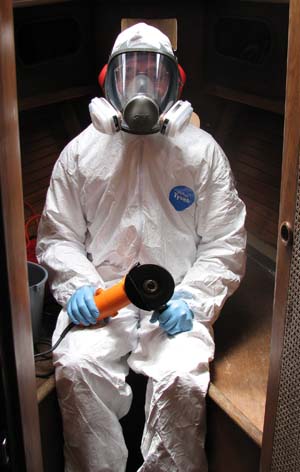 I’ve had much better times in a different bunny suit…and Meps had a
I’ve had much better times in a different bunny suit…and Meps had a